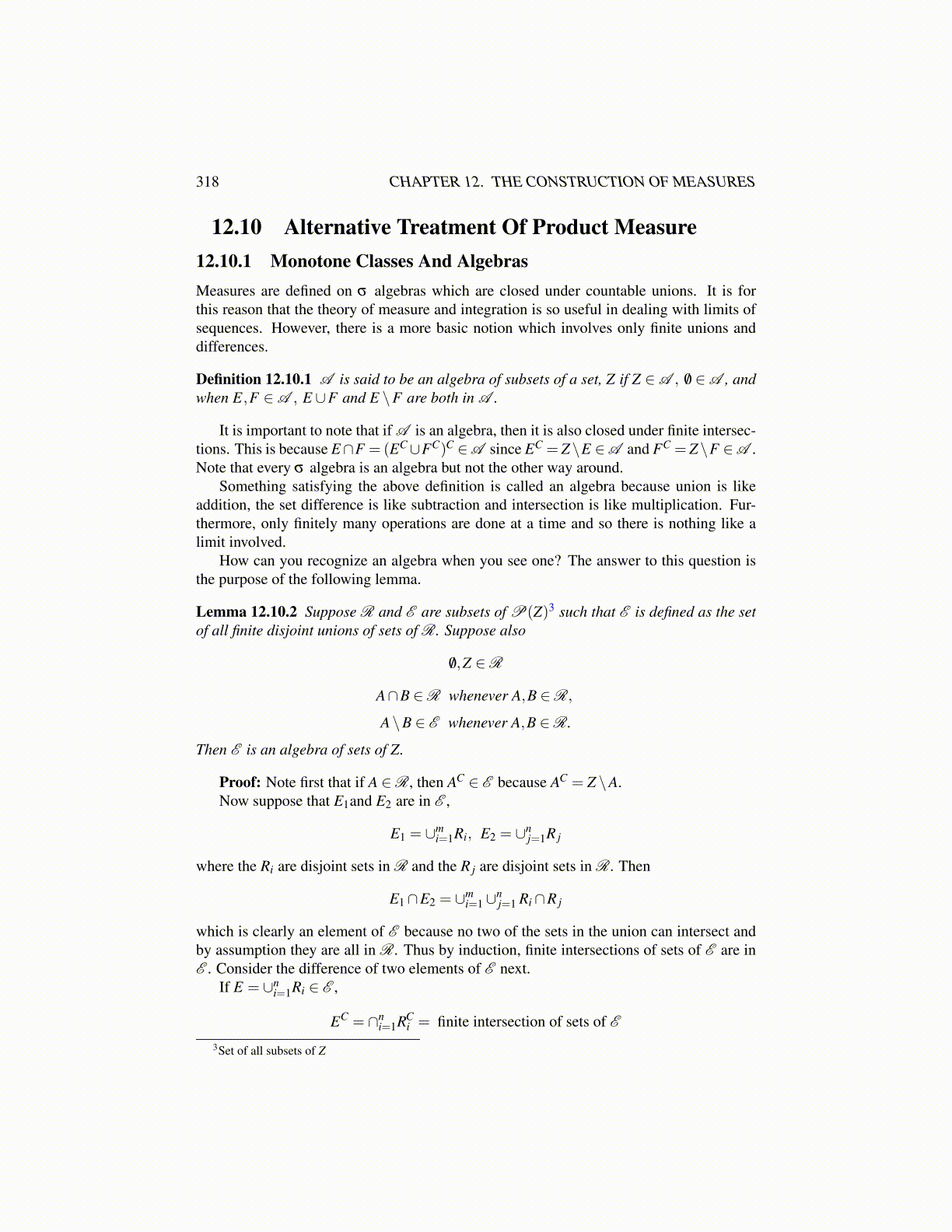
318 CHAPTER 12. THE CONSTRUCTION OF MEASURES
12.10 Alternative Treatment Of Product Measure12.10.1 Monotone Classes And AlgebrasMeasures are defined on σ algebras which are closed under countable unions. It is forthis reason that the theory of measure and integration is so useful in dealing with limits ofsequences. However, there is a more basic notion which involves only finite unions anddifferences.
Definition 12.10.1 A is said to be an algebra of subsets of a set, Z if Z ∈A , /0 ∈A , andwhen E,F ∈A , E ∪F and E \F are both in A .
It is important to note that if A is an algebra, then it is also closed under finite intersec-tions. This is because E∩F = (EC∪FC)C ∈A since EC = Z\E ∈A and FC = Z\F ∈A .Note that every σ algebra is an algebra but not the other way around.
Something satisfying the above definition is called an algebra because union is likeaddition, the set difference is like subtraction and intersection is like multiplication. Fur-thermore, only finitely many operations are done at a time and so there is nothing like alimit involved.
How can you recognize an algebra when you see one? The answer to this question isthe purpose of the following lemma.
Lemma 12.10.2 Suppose R and E are subsets of P(Z)3 such that E is defined as the setof all finite disjoint unions of sets of R. Suppose also
/0,Z ∈R
A∩B ∈R whenever A,B ∈R,
A\B ∈ E whenever A,B ∈R.
Then E is an algebra of sets of Z.
Proof: Note first that if A ∈R, then AC ∈ E because AC = Z \A.Now suppose that E1and E2 are in E ,
E1 = ∪mi=1Ri, E2 = ∪n
j=1R j
where the Ri are disjoint sets in R and the R j are disjoint sets in R. Then
E1∩E2 = ∪mi=1∪n
j=1 Ri∩R j
which is clearly an element of E because no two of the sets in the union can intersect andby assumption they are all in R. Thus by induction, finite intersections of sets of E are inE . Consider the difference of two elements of E next.
If E = ∪ni=1Ri ∈ E ,
EC = ∩ni=1RC
i = finite intersection of sets of E
3Set of all subsets of Z